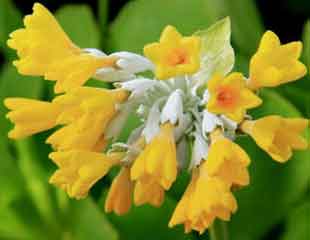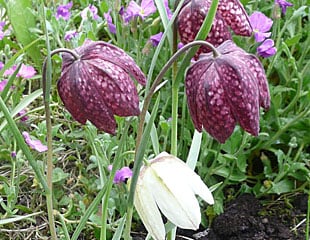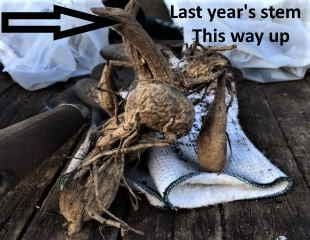What to do in the garden in March
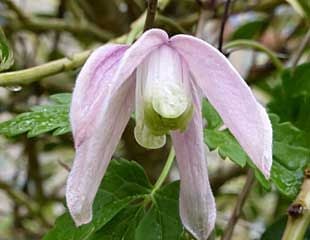
March at a Glance
- Plant summer bulbs, such as Dahlia and Lily
- More pruning this month: Roses, Buddleia, Cornus, Hydrangea and more
- Plant snowdrops in the green for next year's display
- Prepare the veg plot
- Start to sow hardier seeds and half-hardy annuals under glass
March in the Garden
March is the first month of spring, and gardens are alive with the colour of spring bulbs. In flower are Crocus, Daffodils, scented Narcissus, Fritillaria meleagris (common name' Snakes Head Fritillary') and the delicate Erythronium. For more information Check out shrubs and plants flowering in March
Gardening calendars are only a guide because so much depends on the weather in March, sometimes it can be spring like, other times cold and frosty. The weather will affect the degree to which the soil has warmed up ready for planting.
Books and magazines are full of ideas for plants to buy and plant out in March, but in many parts of the country, March can be a cold month with frosts, (we will never forget the beast from the east.) March is not the time to plant frost tender plants (check out 'frost tender') just one frost can kill tender plants.
However, with some warmer days and increasing light levels, you can start sowing. Check out the top 10 tips for Ideas and a video about how to sow and germinate seeds.
Looking to add some March colour to the garden? Check out shrubs and plants at their best and flowering in March.
What seeds can I sow in March?
If you have a heated greenhouse or room in your house to keep plants warm, you can sow anything in March. But that's a luxury most gardeners do not have, so what can you sow in March in an unheated greenhouse/conservatory or porch?
Check out the video which explains it all.
What out for these!
As the soil warms up, so do the slugs. The emerging delicate shoots of herbaceous plants are a tasty snack for a slug. Start protecting the plants; tips on how to beat the slugs.
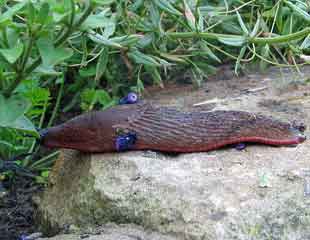
Start feeding roses
Roses are not the easiest of plants to grow, so it's best to get them off to a good start. Feed them as soon as new growth is coming through usually March/April and regularly, at least monthly, throughout the growing season.
I use Uncle Tom's rose tonic, and this is not an affiliate link, I just recommend it because I have found it to be excellent.
I also recommend before you buy a rose, check out the variety carefully. Some varieties of roses have an improved resistant to disease and the dreaded black spot.
Look for the RHS AGM award, or search sites such as David Austin for disease resistant varieties

Bulbs to plant now for Summer colour
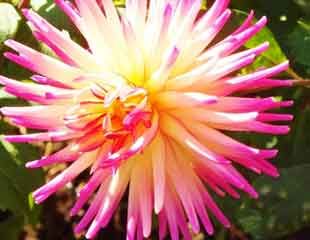
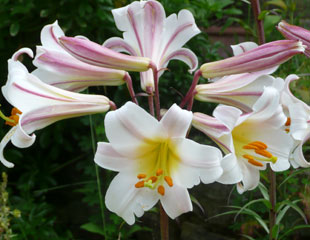
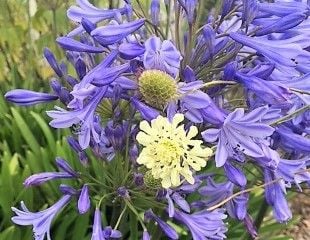
March and April are summer bulb planting time, ideal for Dahlia and Lilies. Planting as bulbs or tubers is cheaper than buying pot-grown plants later in the year.
If you buy Dahlias as tubers, you need to plant about 6 weeks before the last expected frosts. This is because Dahlias are not frost hardy (explanation of frost hardy) and frost will damage the new top growth.
It takes about 6 weeks for the new growth to come through to the soil surface, which is the reason for the time delay. If you get caught out, cloche them. If your growing conditions are not ideal, such as colder or wetter, it is better to start Dahlias in containers under glass and bring out to harden off in May. More tips about How to Grow Dahlias.
Where ever you plant Dahlia, the pointy end goes up. If you look at the image, you can see where last year's stem was, and this goes upright, and it's planted as per the image.
The centre image above is Lilium Regale. March is the right time to plant lily bulbs. Pick a good-sized pot and fill with suitable compost, plant 3 bulbs per pot, and cover with more compost.
Keep the bulbs in a sheltered spot or in the greenhouse until established. The pots are ideal for placing on the patio to enjoy the scent or filling up gaps in the borders. More about growing lilies and images of different types of Lilies.
Brand new video for March 2025.
How and When to Plant Dahlia Tubers, plus information about how to protect the Tubers from frost and a step-by-step planting guide.
Dozens of different varieties, shapes and colours of Dahlia tubers are available from Suttons on line, more details, (affiliate link.)
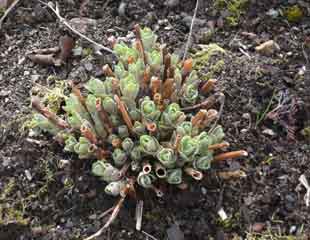
Tidy Perennials
In March, you can tidy up perennials and cut them back before the new growth gets too advanced. Once the plant has started regrowing in earnest, it can be difficult to cut it back without damaging the new growth.
In the image, the Sedum has had all the old growth removed, but you can see the new growth coming through.
Pruning Shrubs in March
March like February is a big pruning time in the garden. It is important to only prune the right shrubs, otherwise you may impair flowering. Prune these shrubs in March:
Prune Bush and Shrub Roses. First, remove anything that looks unhealthy. This means removing any branches which are spindly, or don't look good, prune them away. Look at the remaining framework on each major branch, look for a bud which faces outwards (away from the plant) cut on a slope just above. Cut to around 40cmc (1ft - 1.5ft) which is around knee high. You are aiming for a goblet shape. It's a good idea, if you have time, to feed the roses after pruning.
If you haven't already done so, March (and February) is also the correct time to prune Buddleia. Cut back to 15cms and don't panic afterwards when it looks very bare. Buddleia is a vigorous shrub and will quickly re grow. Before you prune, check your variety of Buddleia. March is the time to prune B. davidii but not Buddleia alternifolia or Buddleia globosa. This is because these Buddleia have flowers which are on last year's stems (called old wood,) and if you prune now, you will cut off the flowers. (Buddleia images of B.alternifoilia, davidii and globosa to show which is which.)
You can also hard prune Lavatera, as the new green shoots are emerging, cut the old wood right back and the new growth will flourish and carry this year's flowers.
Coppice Eucalyptus to keep it under control.
Prune Hydrangea paniculata removing the spent flower heads and cut down to a bud, more about growing and pruning Hydrangeas.
Prune winter flowering Jasmine removing most of the weak, straggly and spindly growth.
Give Cotinus either a light prune to trim into shape or a hard prune to contain growth.
Lonicera (Honeysuckle) prune about one third of the oldest growth down to ground level. If the plant is overgrown, it can be pruned hard to rejuvenate.
Prune Pyracantha (firethorn) and Euonymus lightly trimmed back into shape and to keep to size.
Last chance to prune Wisteria, which is essential to keep it flowering. Tips and video on how to prune Wisteria.
Pruning Cornus in March
March is the time to cut back Cornus, common name Dogwood as this will enhance the colourful stems next winter. Cut down close to ground level, which will encourage it to shoot and grow new stems which will provide next winter's colour. You can cut all or most of the stems. If Cornus is not coppiced regularly, over time, the colour will lessen.
If you are unsure about how to prune/coppice Cornus, or concerned about cutting it back so hard, check out my video showing how to cut back Cornus along with "before and after" shots.
Below, the first image shows two Cornus, an uncut Cornus, and a pruned Cornus together with a tug showing just how many stems need to be removed. The video shows this more clearly.
The second image may seem odd because it is a home-made propagator in which Cornus off cuts have been used to prop up the poly bag. Look closely and you will see it's not just the seedlings which are growing but also the Cornus twigs. Cornus must be one of the easiest shrubs on the planet to propagate. Cut, push into soil, and keep moist and up it grows. Ideal for the gardener and as gardening gifts, echo friendly, no air miles home grown.
Also, the cut Cornus stems are useful as pea sticks to support small plants and seedings, such as the sweet peas bean family when they are growing under-glass before planting out.
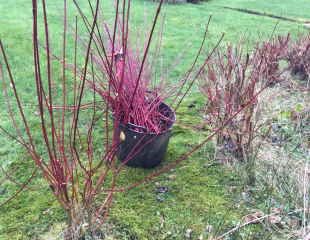
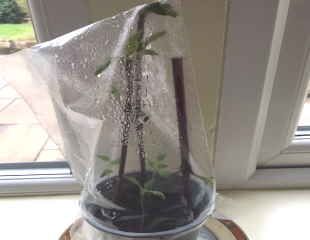
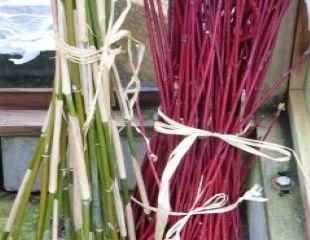
Plant snow drops for Next Year
If this winter you enjoyed an inspiring snow drop walk, March is a good time to plant snowdrops because you can buy them" in the green". The easiest way to establish snowdrops is to plant them "in the green" which is as small plants, not bulbs. It can be harder to get snowdrops established from bulbs so better to buy plants now and plant in clumps. Snowdrops are a woodland plant, which means they dislike too much sun and are best planted in an area which gets some shade close or under a shrub.
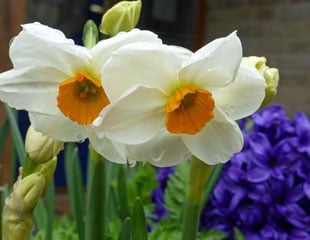
Assess spring bulbs and daffodils
This is a good time to assess the performance of spring bulbs, especially daffodils. If you have a clump of daffodils which are blind, that is to say, without flowers, mark them with a stick for attention. Once the foliage has gone over, lift the clump and check them. If they are congested, plant back, having first separated the bulbs and plant further apart. You can also try planting deeper if they have failed to flower.
As the early daffodils finish flowering, dead head them but it's important to leave the foliage in situ until it has died back. This feeds the bulb for next year, plus you can give the fading bulbs a feed as well.
Another common cause of blind bulbs is if they are planted too shallow. Ensure when re planting the clump it is at least 3x the depth of the bulb. Check out Why don't spring bulbs flower?
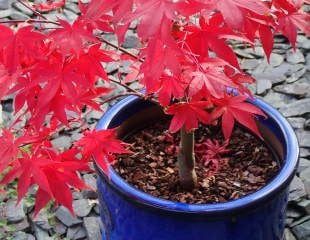
Plants and shrubs in Containers
Many plants and shrubs are ideal grown in containers on a permanent basis. Over time, the compost can become depleted. One way to remedy this is to apply a feed, and the other is to topdress the container in the spring. To do this, remove the top 5-7cms of compost from the container and top it up with fresh compost, which will improve the soil. All containers are prone to drying out more quickly, applying a mulch may help to reduce water loss.
No need to waste the compost you remove. Spent compost makes an ideal mulch and is useful for topping up soil levels in borders.
Sow annuals for a summer display
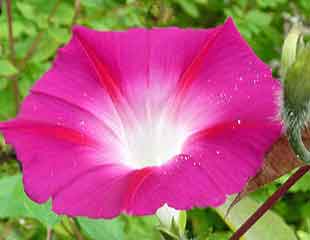
March is a good time to start growing annuals, but only Hardy annuals when its still so cold. A new 2025 video explains Sowing Hardy Annuals, what are they and when to sow.
The advantage of sowing annuals from seed is it is much cheaper than buying plants, plus you can choose from a wide range of plant seeds not generally available in garden centres. It is fun to grow something unusual. An exotic annual to grow is Ipomoea, also called Morning Glory, illustrated right, which produces delicate and attractive trumpet-shaped flowers. More tips and advice on growing Ipomoea.
This year 2025, I have purchased Ipomoea Noctiflora Alba Moonflower. A variety of Ipomoea which is pure white, night flowering and scented.
If you are thinking of growing sweet peas from seed, now is a good time to sow. Sweet Peas need quite a lot of time and effort, but I cannot resist sweet peas and grow them every year. In March you can sow sweet peas under glass, or in more sheltered areas, directly where they are to grow outside. Video how to Plant and grow sweet peas.
March in the Veg plot
Prepare the veg plot
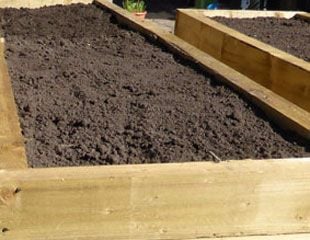
March is the month when planting gets under way and before planting, it is worth spending time to improve the soil and raise yields. Most vegetables are hungry feeders and it's a good idea to enrich the soil with organic matter such as well rotted manure, chicken pellets, or compost. Mixing in the organic material will break up the soil. I tend not to dig it which can make it compacted, but rake it thoroughly so the soil is a fine tilth.
If it is wet, or has been a wet winter, it is important to keep off the soil so it doesn't get compacted. Many crops such as salads and carrots like a fine soil and stones are a hindrance. Raking the plot to render the soil finer makes it easier to plant into and creates a better growing medium, as in the image.
Cold weather protection
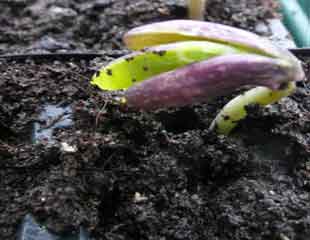
Whether you are growing your vegetables from seed or small veg plants, deciding when to plant out in the veg plot depends on the veg, the weather, and your plot.
Because broad beans are the hardiest of the bean family, plant them first. In March, you can sow outside if the soil is warm enough. Broad beans are reasonably hardy, some varieties down to -10 (check the packet) so you only need to protect fresh growth from a heavy frost or snow by a fleece or cloche. An alternative if you have a conservatory, greenhouse, or cold frame is to sow seed under glass so you have sturdy plants to put into the veg plot later in the Spring. In March it is best to plant outside only hardy vegetables.
The same applies if you are buying small vegetable plants. They will need protection from the worst of the weather. Small plug plants are good value, but it is as well to bear in mind the garden retailers/grows have them in ideal conditions protected from the weather. After purchasing, you will need to try to do the same.
All Beans like a long root run are best germinated into root trainers or loo rolls holders. Sow the seed nearer the top of the holder so the roots can reach down. The same is true if you are sowing sweet peas. Beans need no attention whilst growing on other than to ensure light levels are good so that plants do not get spindly. Water carefully if in loo rolls holders, only in the centre, try not to water the cardboard holder as it will disintegrate.
If your plot is exposed/subject to frosts and cold winds even with cloches and protection available, it is best to delay outside sowing of French beans, cucumbers and squashes until later April/May. You can sow these under glass and start off young plants, but for outside sowing or planting out it is better to wait for later in the season.
Chitting potatoes
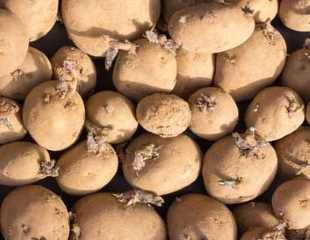
This month you can either carry on chitting potatoes, or plant early Potatoes. Potatoes are an easy and rewarding crop to grow; for tips and advice. Potatoes can take up a lot of space in the veg plot, so fortunately, Potatoes are a vegetable ideally suited to growing in containers.
If you have a greenhouse, you can even start potatoes off in containers in the greenhouse and move out once all risk of frost has passed. Frost will damage the new potato shoots, called haulms. The time growing in the greenhouse will get the plants off to a good start.
Germinating herbs in March.
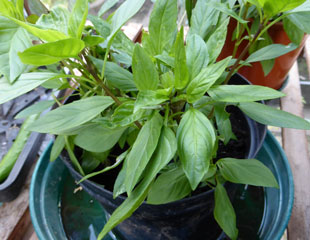
Indoors or in a greenhouse, March is also an opportunity to germinate herbs, such as Basil, Dill, Parsley, Chives and Coriander. Tender herbs such as Basil and Coriander will need to be kept warm and frost free until later in the year and are best not planted out until May.
Parsley can be seeded where it is to grow, whether that is in the veg plot or containers. It can be tricky to germinate and needs some warmth, so early seeding can be slow. Parsley needs to be kept moist.
If you fancy growing something different, Thai Basil in the image is widely available. It is easy to grow and is great in stir-fries. Start off under glass the same as Basil. It has a distinct aniseed flavour to the leaves.
Chives are hardy and will live in the garden all year round. In March you can see the shoots growing again. There is also a variety of garlic chives, allium tuberosum, common name Chinese chives, which has a mild garlic flavour. Like all chives, it is easy to grow and flowers white during the summer. Bees love Chives.

